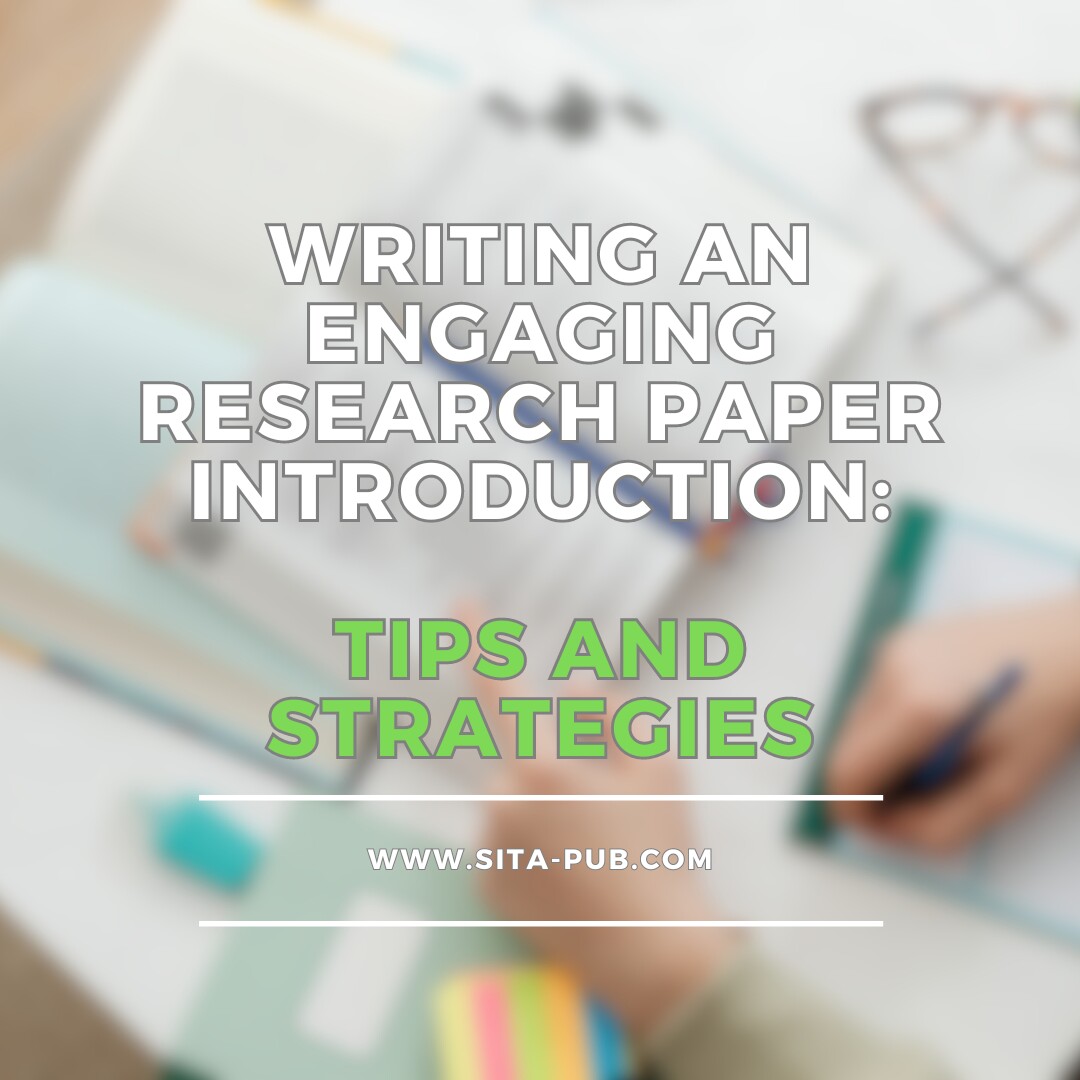Writing an Engaging Research Paper Introduction: Tips and Strategies


The research paper introduction is a vital section that shapes how readers connect with your study. A well-crafted introduction not only grabs attention but also sets the stage for the rest of the paper. In this guide, we will explore effective academic writing tips to help you write a compelling introduction that clearly outlines your research objectives.

A typical research paper structure includes several key sections, each serving its own purpose:
Title: A concise phrase that reflects the main idea of the research.
Abstract: A brief summary that highlights the research question, methods, results, and conclusions.
Introduction: An overview of the topic, including background information, the research problem, and the thesis statement.
Literature Review: A survey of existing research, identifying gaps that your study will address.
Methodology: A detailed explanation of how the research was conducted, including data collection and analysis methods.
Results: Presentation of findings, often illustrated with tables or graphs.
Discussion: An interpretation of the results, exploring their implications and how they relate to existing literature.
Conclusion: A recap of findings, emphasizing their significance and suggesting areas for future research.
References: A list of all sources cited, formatted according to specific guidelines.
A strong introduction does more than just start your paper; it lays the groundwork for the entire study. Here are some reasons why a good introduction is essential:
The introduction should include engaging opening lines that draw readers in. Starting with a surprising fact, an interesting question, or a relevant quote can pique curiosity and encourage the reader to continue.
Providing background information helps situate your research within a broader framework. This context allows readers to understand why your study is important and relevant to existing research.
A well-defined introduction clearly states the research problem and objectives. This clarity helps guide readers on what to expect throughout the paper.
A clear thesis statement is crucial as it outlines the main argument or contribution of your research. This statement serves as a focal point for the paper, helping readers follow your argument.
An effective introduction acts as a roadmap, outlining how the study will unfold. It gives readers a preview of the structure of your argument, making it easier for them to navigate through the paper.

Begin with an interesting statement, question, or anecdote that draws readers in. This could be a surprising statistic related to your topic or a relevant quote that resonates with your research theme.
After the hook, offer context to help readers understand the broader topic. This might include defining key terms, summarizing relevant literature, and explaining the importance of your research. Providing this background helps readers see the relevance of your work.
Articulate the specific problem or gap in knowledge that your research addresses. This clarity helps readers appreciate the significance of your study and why it matters in the field.
Clearly state the purpose and goals of your research. This provides readers with a clear direction and frames the aims of your study. By outlining your objectives, you help them understand what you intend to achieve.
Conclude the introduction with a clear thesis statement that encapsulates the main argument of your paper. This statement serves as a guide for readers as they navigate through your research.
Aim for brevity while providing essential information. A concise introduction maintains reader interest and makes your main points clearer. Avoid unnecessary details that could distract from your main message.
Avoid jargon and overly complex sentences. Clear, straightforward language ensures that your introduction is accessible to a broad audience, including those for whom English is not a first language.
After drafting, revisit your introduction to ensure coherence and alignment with the rest of the paper. Effective revisions enhance clarity and impact. Editing is key to refining your message and improving readability.
Emphasize the importance of your study within the field. Explain how your research contributes to existing knowledge or addresses a specific issue. Highlighting significance helps readers understand the value of your work.
Tailor your introduction to your target audience. Consider their background knowledge and adjust your language and content to engage them effectively. Understanding your audience allows you to communicate more effectively.
In conclusion, the research paper introduction is a vital part of effective communication for your study. By engaging readers, providing essential context, and clearly articulating research objectives, a well-crafted introduction lays the foundation for a successful paper. Implementing these academic writing tips can enhance your ability to create compelling openings that resonate with your audience. Ultimately, investing time and effort into a strong introduction can improve the quality and impact of your academic work. A clear and engaging introduction not only helps your readers understand your research but also encourages them to explore it further.
Ready to publish your research paper? Contact SITA Academy today! Our team is here to guide you through the publication process and help you share your work with a wider audience.
What services do we offer?
If you have any questions, inquiries, or would like to learn more about our services, please don't hesitate to reach out to us. Our dedicated team is ready to assist you.